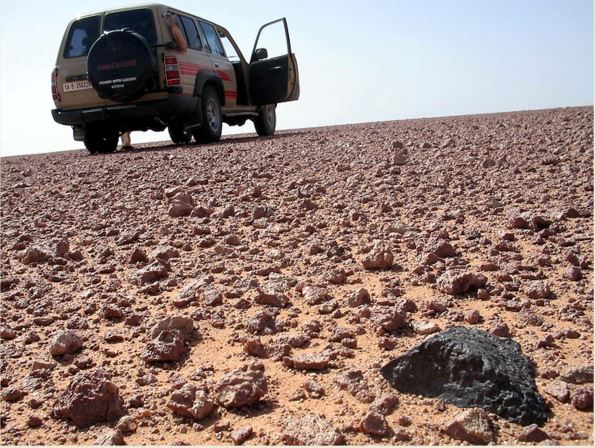Learn Cool Fun Facts About Meteors And Meteorites 🌠
Shooting Stars & Cool Space Rocks!
Seeing a bright meteor streaking across the sky is one of the coolest things you can see in the night sky; finding one of these space rocks which survived the fireball and crashed into the ground (known as a meteorite) is even better! Most meteors are tiny grains of sand, but those meteorites that are found on the surface are divided into 3 main groups; stony, stony-iron and iron meteorites. Some are really cool looking!
Interesting Facts About Meteors And Meteorites!
A space rock found on Earth starts out life as a piece of rocky or metallic debris floating through space as it orbits the Sun and is called a meteoroid. These kind of look like asteroids, but are smaller ranging from a grain of sand to a large beach ball (any smaller and astronomers refer to them as micrometeoroids or space dust). The debris typically comes from collisions between objects in the asteroid belt or the tails of comets.
When this meteoroid gets too close to Earth, it begins to fall and races through the upper atmosphere (typically above 75 to 100 km (47 to 62 mi)) at extremely high speeds of around 20 km/s – that’s 72,000 km/h (45,000 mph). This heats and burns the meteoroid causing it to glow as it streaks across the sky as a meteor or "shooting star".
Most meteors streak across the sky for only a second and vapourise before reaching the lower atmosphere, but sometimes (if the meteor is large enough) the streak brightens into a fireball and reach closer to the ground. Astronomers call these fireballs "bolides" with the truly rare massive ones, such as the Tunguska event and Chelyabinsk meteor, called “superbolides”.
Meteors often streak across the sky in all directions, but occasionally they appear to radiate from a single point in the sky at a higher rate; these are called meteor showers as Earth passes through debris left by a comet. Scientist calculate that millions of meteors streak across Earth’s skies every day (day and night), most are only tiny, but they are estimated to add up to 15,000 tonnes of debris a year!
If the meteor is large enough, or dense enough, and makes it through its fiery journey through the atmosphere to hit the surface this then becomes a meteorite. These vary in size, most are small, but very rarely they are big enough to create an impact crater like one of the 190 confirmed impact craters on Earth’s surface, the most famous examples are the Meteor Crater and Chicxulub Crater (which is believed to have wiped out the dinosaurs 66 million years ago).
The area over which meteorite debris falls is known as a strewn field and there are between 5 – 10 new ones observed each year. There have been nearly 40,000 well-documented meteorite finds from around the world with them always being named after the places they were found. Meteorites have even been found on the surface of the Moon and Mars.
Meteorite Types
Meteorites found on Earth are divided into three basic groups (and several subgroups) based on their structure, chemical composition and mineralogy;
- The most common are the stony meteorites; which are composed of rocky silicate minerals
- The dense iron meteorites predominantly made of metallic iron-nickel
- And finally the sort after stony-iron meteorites which contain a mixture of both metallic and rocky material
The stony meteorites account for about 94% of the meteorites with ones containing chondrules (called chondrites) making up the majority. Chondrules are cool little small round balls which coalesced from the original accretion disc in the early solar system’s formation but never melted. As a result, along with comets, they are some of the oldest unaltered material and the eventual “building blocks of the planets, moons and asteroids".
A small portion of the stony meteorites are called achondrites which don’t contain chondrules and likely came from large asteroids like Vesta or the Planet Mars.
The iron meteorites represent 5% of meteorites found and are composed of iron-nickel alloys. They are believed to be fragments of smashed up cores of planetesimals and minor planets that were once molten; allowing the denser metal to separated from the silicate rock and sink to the core. This group might represent a much lower portion as they are considered easier to find due to their dark, metallic nature.
The rarest meteorite group the stony-iron meteorites, constitute the remaining 1% of meteorites discovered. These are a mixture of iron-nickel metal and silicate minerals with one particularly beautiful type called the pallasites, is even thought to have been formed in the boundary zone between the silicate rocks and iron core of a planetesimal.

















